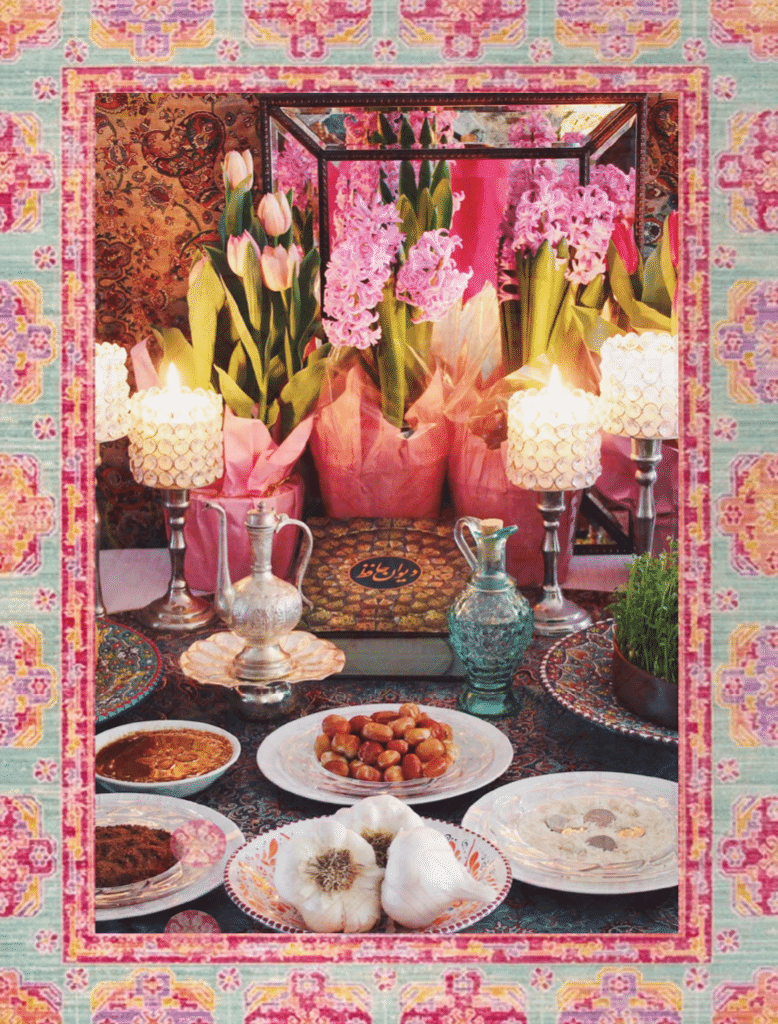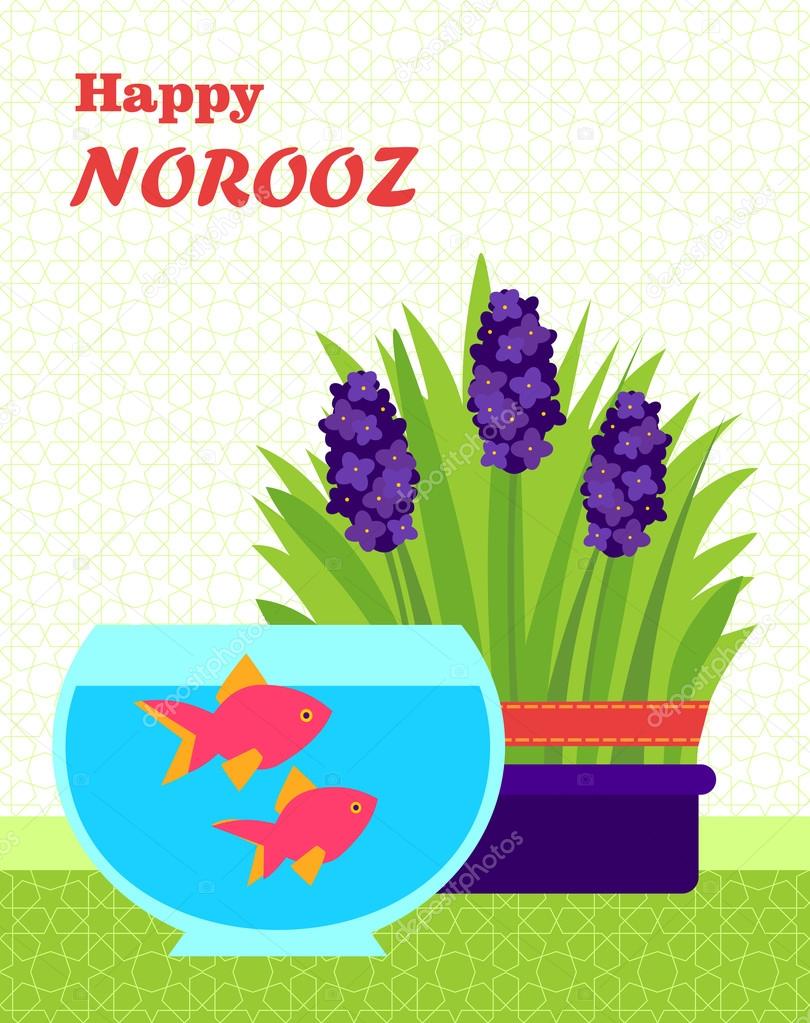Let's talk about Persian New Year, folks. This isn't just another celebration; it's a deep dive into culture, tradition, and a way of life that has survived centuries. Imagine sitting around a beautifully decorated table, the air filled with the scent of blooming hyacinths, and the sound of laughter echoing through the room. That's what Nowruz, or Persian New Year, is all about. It's more than just flipping the calendar; it's a moment to reflect, renew, and reconnect with what truly matters.
Persian New Year, known as Nowruz, is like the Oscars of Iranian holidays. It's not just one day; it's a season of festivities that lasts for weeks. The celebration marks the first day of spring, and it's all about new beginnings. Imagine a country where the snow melts, flowers bloom, and people gather to celebrate life. That's Nowruz in a nutshell. It's a festival that reminds us to leave the past behind and embrace the future with open arms.
Now, why should you care about Persian New Year? Well, it's not just for Iranians or Persians. It's a universal celebration that resonates with anyone who appreciates tradition, family, and the beauty of nature. This article will take you on a journey through the history, customs, and significance of Nowruz. So, buckle up, folks. We're about to explore one of the most vibrant and meaningful celebrations in the world.
Table of Contents
- The Rich History of Persian New Year
- Symbolism Behind Nowruz
- Key Traditions of Persian New Year
- What's the Haft-Seen Table All About?
- Delicious Food That Defines Nowruz
- How the World Celebrates Persian New Year
- The Spiritual Aspect of Nowruz
- Nowruz in the Modern World
- Tips for Celebrating Persian New Year
- Wrapping Up the Magic of Nowruz
The Rich History of Persian New Year
Let's rewind the clock a bit. Persian New Year, or Nowruz, has been celebrated for over 3,000 years. That's older than most civilizations we know today. It originated in ancient Persia, which is modern-day Iran, and was closely tied to Zoroastrianism, one of the world's oldest organized religions. Back in the day, Nowruz wasn't just a party; it was a sacred event that marked the victory of good over evil and light over darkness.
Historians believe that Nowruz was first celebrated during the Achaemenid Empire, around 550 BCE. Imagine kings and queens gathering in their grand palaces, surrounded by poets, musicians, and scholars. The celebration was so grand that it even attracted visitors from neighboring countries. Over time, Nowruz evolved and absorbed elements from different cultures, making it the rich and diverse celebration we know today.
How Nowruz Spread Across the Globe
Nowruz isn't just an Iranian thing anymore. It's celebrated by millions of people across the globe, from Afghanistan to Azerbaijan, from India to Turkey. The reason? Well, when something is this good, it spreads like wildfire. As Persian culture influenced neighboring regions, Nowruz became a universal symbol of renewal and hope. Today, it's even recognized by the United Nations as an international holiday.
Symbolism Behind Nowruz
Nowruz is all about symbolism, folks. Every aspect of the celebration carries a deeper meaning. Take the Haft-Seen table, for example. Each item on the table represents a different aspect of life, from prosperity to love. It's like a visual poem that tells the story of human existence. The celebration also symbolizes the cyclical nature of life. Just as winter gives way to spring, so too do our struggles give way to new opportunities.
Spring Cleaning: More Than Just a Chore
Spring cleaning is a big deal during Nowruz. It's not just about tidying up your house; it's about clearing out the old and making room for the new. Imagine dusting off every corner of your home, washing your carpets, and polishing your silverware. It's a symbolic act that prepares you for the year ahead. And hey, who doesn't love a clean house?
Key Traditions of Persian New Year
Nowruz is packed with traditions that make it one of the most unique celebrations in the world. From Chaharshanbe Suri to Sizdah Bedar, each tradition has its own charm and significance. Let's break them down:
- Chaharshanbe Suri: This is the Iranian version of New Year's Eve. People gather around bonfires, jump over them, and chant, "Give me your beautiful red color and take back my sickly pallor." It's a way of purifying oneself before the new year begins.
- Haft-Seen Table: The centerpiece of Nowruz, this table is decorated with seven items that start with the letter "S" in Persian. Each item has a symbolic meaning, such as sabzeh (sprouts) for rebirth and sir (garlic) for health.
- Sizdah Bedar: The 13th day of Nowruz is all about getting rid of bad luck. Families head outdoors for a picnic, and it's customary to tie knots in the sabzeh and throw it into running water to release any negativity.
Why These Traditions Matter
These traditions aren't just random acts; they're deeply rooted in Persian culture. They serve as a reminder of our connection to nature, family, and community. In a world that's increasingly fast-paced and disconnected, Nowruz offers a moment to pause and reflect on what truly matters.
What's the Haft-Seen Table All About?
The Haft-Seen table is the heart of Nowruz. It's like the Thanksgiving turkey or the Christmas tree; you can't have Nowruz without it. The table is set with seven items that start with the letter "S" in Persian, each representing a different aspect of life. Here's a quick rundown:
- Sabzeh: Sprouts or grass that symbolize rebirth and renewal.
- Samanu: A sweet pudding made from wheat germ that represents affluence and fertility.
- Senjed: Dried fruit of the oleaster tree that symbolizes love.
- Serkeh: Vinegar that represents patience and age.
- Seeb: Apples that symbolize beauty and health.
- Somagh: Sumac berries that represent the color of sunrise and the victory of good over evil.
- Sir: Garlic that symbolizes medicine and health.
Adding Extra Touches to Your Haft-Seen Table
While the seven "S" items are essential, many families add extra elements to their Haft-Seen table. You might see a mirror to reflect the past, a goldfish to symbolize life, or a book of poetry by Hafez or Rumi. These additions make each table unique and personal.
Delicious Food That Defines Nowruz
No celebration is complete without food, and Nowruz is no exception. The holiday is famous for its delicious and hearty dishes that bring people together. Here are some must-try Nowruz foods:
- Kuku Sabzi: A herb-based frittata that's light and flavorful.
- Reshteh Polo: A rice dish with noodles, herbs, and meat that's perfect for large gatherings.
- Ash Reshteh: A hearty bean and noodle soup that's comforting and filling.
These dishes aren't just tasty; they're also steeped in tradition. Each ingredient is carefully chosen to symbolize prosperity, health, and good fortune. So, when you're enjoying a plate of Reshteh Polo, you're not just eating food; you're participating in a centuries-old tradition.
How the World Celebrates Persian New Year
Nowruz isn't just an Iranian holiday anymore. It's celebrated by millions of people around the world, each adding their own twist to the celebration. In Afghanistan, for example, people prepare a special dish called Samanak, while in Tajikistan, they light lanterns and sing traditional songs. Even in the United States, Iranian communities gather to celebrate Nowruz with parades, concerts, and cultural events.
Why Nowruz Resonates Globally
Nowruz resonates with people because it's all about universal themes: renewal, hope, and family. Who can't relate to those? It's a celebration that transcends borders and brings people together. In a world that's often divided, Nowruz offers a moment of unity and understanding.
The Spiritual Aspect of Nowruz
While Nowruz is a joyous celebration, it also has a deep spiritual dimension. For many, it's a time for reflection and introspection. It's an opportunity to evaluate the past year and set intentions for the future. Some people even visit shrines or mosques during Nowruz to seek blessings and guidance.
Connecting with Nature
One of the most beautiful aspects of Nowruz is its connection to nature. The celebration marks the first day of spring, a time when the earth awakens from its winter slumber. This connection reminds us of our place in the natural world and our responsibility to care for it.
Nowruz in the Modern World
Nowruz has managed to stay relevant in the modern world by adapting to changing times. Today, people celebrate Nowruz in a variety of ways, from virtual gatherings to social media challenges. The essence of the celebration remains the same, though: it's all about coming together and embracing new beginnings.
Tips for Hosting a Modern Nowruz
Want to host a Nowruz celebration in 2023? Here are some tips:
- Create a virtual Haft-Seen table using video conferencing tools.
- Host a Nowruz-themed cooking class online.
- Organize a digital photo contest where participants share their Nowruz traditions.
Tips for Celebrating Persian New Year
Celebrating Nowruz doesn't have to be complicated. Here are some simple tips to make the most of the holiday:
- Start your spring cleaning early to avoid last-minute stress.
- Decorate your home with fresh flowers and greenery.
- Invite friends and family over for a Nowruz feast.
- Learn a few Persian phrases to impress your guests.
Wrapping Up the Magic of Nowruz
Nowruz is more than just a holiday; it's a way of life. It's a celebration that reminds us to embrace change, connect with loved ones, and appreciate the beauty of the natural world. Whether you're Iranian or not, Nowruz offers something for everyone. So, why not give it a try? Set up a Haft-Seen table, cook a delicious Persian meal, and invite your friends and family over for a day of fun and laughter.
Before we wrap up, let's take a moment to reflect on what we've learned. Nowruz is a celebration of renewal, hope, and unity. It's a reminder that no matter where we come from, we all share the same basic desires: to live, to love, and to grow. So, as you go about your day, take a moment to appreciate the little things. Who knows? Maybe this year's Nowruz will inspire you to start your own tradition.
And hey, if you enjoyed this article, don't forget to share it with your friends. The more people who know about Nowruz, the better. After all, a celebration is always more fun when it's shared. Nowruz Mobarak, folks! May this new year bring you peace, prosperity, and happiness.


